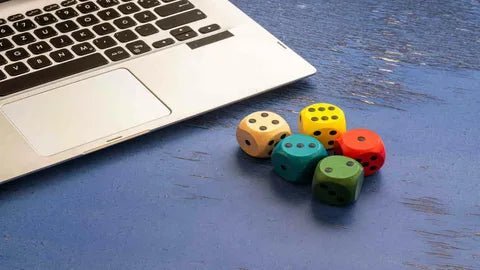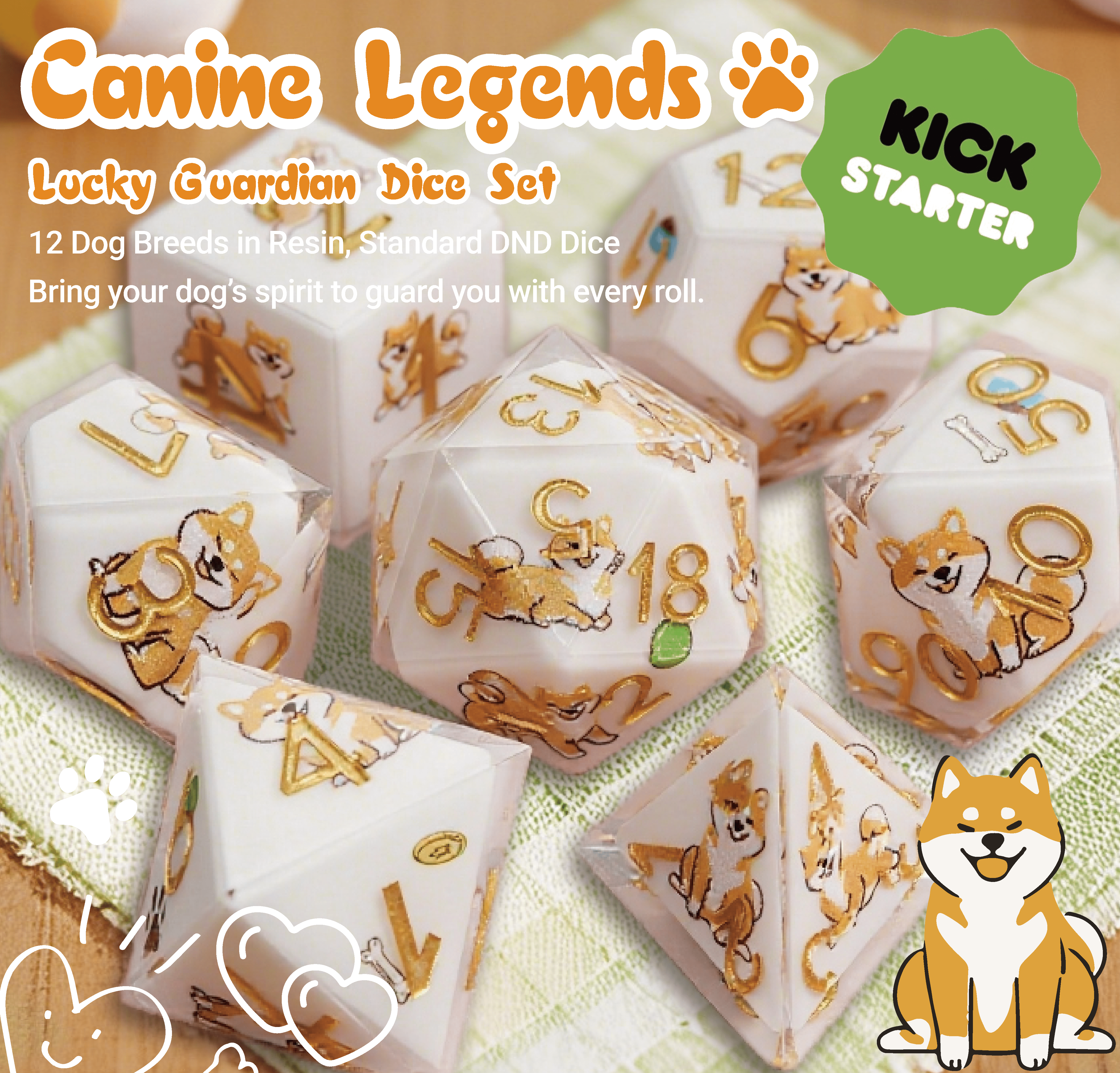Table of Contents
- -What is a Dice Tower?
- -The Randomness and Fairness of a Dice Tower
- -History of the Dice Tower
- -The World's Oldest Dice Tower
- -How to Use the DND Dice Tower
- -What are the advantages of a dice tower?
- -Common Dice Tower Types
- -Can Dice Towers Be 3D Printed?
- -Dice Tower Height and Optimal Angle
- -Why Are Dice Towers Sometimes Expensive?
- -How to Choose or Evaluate a Dice Tower?
- -Conclusion
In the thrilling games of DungeonDragon or other board games, dice often determine your character's fate—a single crucial roll could mean the difference between a desperate comeback and a life-or-death struggle for your entire team. But have you ever encountered a dice rolling off the table, hitting a drink, or even causing a dispute due to an uneven surface? That's when a dice tower comes in handy.
A dice tower not only ensures fairness and randomness in rolls but also adds a sense of ritual and spectacle to the game, making every roll of the dice exciting. Whether you're a beginner or a seasoned Dungeon Master, the right dice tower can greatly enhance your gaming experience. Below, we'll delve into the history, uses, material choices, and even the most recommended styles of dice towers, giving you a comprehensive understanding of this tabletop gaming artifact.
What is a Dice Tower?
A dice tower is essentially a small dice-throwing device designed for tabletop games and role-playing games. Its purpose is to make each dice roll fairer and more random, while also enhancing the fun and ritual of the game. While seemingly simple, it boasts ingenious internal design.
A standard dice tower typically consists of three main components:
- Top entrance: This is where you drop the dice. Simply drop the dice from the top of the tower, and they begin their "random journey."
- Interior: The interior of the tower often features inclined planes, spiral staircases, or small baffles to keep the dice from colliding and tumbling as they fall. These features ensure that each roll and collision of the dice is unpredictable, thereby enhancing the randomness of the dice roll.
- Bottom exit: This is where the dice finally exit. A small collection tray is often included to prevent them from flying around and allows players to easily view the results.
This design ensures that each dice is constantly colliding until it finally lands safely. This not only makes the landing point of the dice more random, but also makes the entire dice-rolling process full of ritual, which looks both professional and interesting.
The Randomness and Fairness of a Dice Tower
Some might ask, "Can't I just roll the dice by hand?" Of course, you can, but a dice tower can further enhance randomness and fairness. The dice tower's design allows the dice to undergo multiple collisions and bounces, resulting in a nearly completely random landing. This multi-impact process effectively prevents "manipulated rolls." For example, some experienced players can manipulate the dice's landing point through hand gestures, but with a dice tower, the continuous internal collisions virtually negate this human effort.
Furthermore, uneven surfaces or friction from the tablecloth can cause subtle deviations in the dice's roll, potentially altering the outcome when rolled by hand. With a dice tower, however, the dice have already undergone multiple random collisions by the time they exit the tower, minimizing the impact of external factors. This ensures fair and reliable results regardless of table conditions.
Consistency is also a major advantage of a dice tower: regardless of who rolls the dice, the dice are subjected to the same random forces within the tower, ensuring that everyone is rolling under the same conditions. This is why dice towers are indispensable tools for large-scale Dungeon Fighting tournaments or serious board game events. It can be said that the randomness and fairness of the dice tower not only come from the internally designed collision mechanism, but also are reflected in reducing interference from external factors and unifying dice-rolling conditions, making each dice roll fairer and more transparent.
History of the Dice Tower
You might be surprised to learn that dice towers aren't a product of modern board games. The earliest dice towers date back to ancient Rome, where they were used to roll dice at banquets, gambling, and entertainment. Ancient Roman dice towers were typically made of clay, stone, or copper, and had internal baffles to ensure a more random and fair roll.
The most famous example is the Vettweiss-Froitzheim dice tower in Germany. Later, during the European Middle Ages, dice towers continued to be used for aristocratic gatherings and church entertainment. Their materials evolved from clay and stone to wood and metal, and their craftsmanship became more refined. In modern times, dice towers have become more diverse in materials and functionality, not only ensuring randomness but also becoming collectibles and themed decorations for DND and board gamers.
The World's Oldest Dice Tower
In 1983, archaeologists discovered a 4th-century AD dice tower at the ruins of a Roman villa near Vettweiss and Froitzheim in North Rhine-Westphalia, Germany. This is the oldest dice tower found in the world, known locally as a turricula. Its function was almost identical to today's dice towers—allowing the dice to roll repeatedly to prevent cheating.

Made of copper alloy, the dice tower was an upright, hollow cube with an open top and three internal baffles to ensure random movement of the dice as they fell. When the dice exited the tower, they would ring three bells, one of which remains intact. The tower's four sides are adorned with perforated patterns and Latin inscriptions, including "PICTOS VICTOS HOSTIS DELETA LUDITE SECVRI" and "UTERE FELIX VIVAS."
This demonstrates that humanity has struggled for millennia to address the issue of fairness in gaming. The dice tower embodies this ingenuity.
How to Use the DND Dice Tower
Using the DND Dice Tower is incredibly simple, with virtually no learning curve:
- Simply place the dice into the tower's top entrance, then release and let them fall naturally.
- The dice will tumble and collide on the tower's ramps and small staircases, adding randomness.
- Eventually, they'll fall from the bottom exit onto the dice tray, revealing the roll result.
Whether you're rolling a single 20-sided die (D20) or a full stack of dice—such as D4, D6, D8, D10, D12, and D20—the DND Dice Tower can easily handle it, ensuring each roll is fair and random. Using the Dice Tower is not only convenient but also adds a sense of ritual to the dice-rolling process, making your DND game experience smoother and more fair.
Tips:
- Don't place too many dice at once: The DND Tower's entrance isn't large enough, and multiple dice can easily get stuck.
- Dice Tower Interior Layout: The more complex the dice tower's ramps, staircases, and other internal layouts, the more efficient the dice roll.
- Keep the tower clean: dust or small debris may affect the rolling effect of the dice.
What are the advantages of a dice tower?
1. Improves randomness and makes dice fairer: Some players can use tricks to "control" the outcome when throwing dice by hand. However, a dice tower has inclined boards or small steps inside, which allow the dice to roll and collide repeatedly, making the results completely random and reducing human influence.
2. Prevents table surface deviation: Sometimes, if the table is uneven or the tablecloth is soft, hand-rolled dice may deviate or come to rest on the edge, resulting in inaccurate results. A dice tower drops the dice from the tower onto the dice tray, ensuring a stable and reliable landing every time, without worrying about the table environment affecting the results.
3. Keeps the table clean: When throwing dice by hand, the dice often roll everywhere or even fall to the floor. With a dice tower, simply place the dice in the top opening and release. The dice automatically fall from the bottom of the tower onto the dice tray, leaving the table neat and tidy.
4. Protects the dice and the table surface: Especially metal dice, it is easy to damage the table surface if they hit it directly, and the dice tower can reduce the impact.
5. Convenient for Multiplayer Games: When a group plays Dungeon Dice or a board game, there can be competition for table space. With a dice tower, everyone can simply place their dice on the tower during their turn, and the tower automatically rolls the result, reducing friction.
6. Enhanced Game Experience: Adds an element of suspense and anticipation to the game. The dice are rolled repeatedly through the tower, increasing randomness and keeping players in suspense as they await the outcome. This added drama can make an ordinary dice game more exciting and engaging.
7. Easy to Use: Simply place the dice in the top slot and release, with no learning curve required.
Common Dice Tower Types
There are a variety of dice towers on the market, each with its own charm and gameplay. Today, we'll introduce you to the most common types of dice towers to brighten your next dice roll!
1. Castle Dice Tower: Resembling a miniature medieval castle, with towers, walls, drawbridges, and more, the castle tower transports you to a fantasy world. Every time the dice roll down the tower, a crisp "click" sound is heard, reminiscent of castle guards carrying out their duties. This design is perfectly suited to medieval-themed games like Dungeons & Dragons, allowing players to immerse themselves deeper into the game world.
2. Wooden Dice Tower: These are typically crafted from high-quality woods like oak, cherry, and walnut, offering a smooth, soft feel and a rich texture. This design is not only practical but also adds a touch of nature to your home decor.
3. Spiral Staircase Dice Tower: Spiral staircase dice towers feature a unique interior design, where the dice roll along a spiral staircase. This design not only increases the dice rolling time but also allows players to enjoy visual and auditory pleasure while awaiting the results.
4. Folding Dice Tower: The most prominent feature of a folding dice tower is its portability. When not in use, it folds flat for easy portability and storage. This design is perfect for players who enjoy outdoor games or travel, allowing you to embark on a gaming adventure anytime, anywhere.
5. Block Dice Tower: A block dice tower features a modular design, allowing you to build your own dice tower by following the instructions, increasing the sense of participation and fun.
6. 3D Dice Tower: A dice tower made using 3D printing technology. The greatest feature of this type of dice tower is its high degree of personalization and design flexibility: players can design their own shapes, such as dragon heads, skulls, castles, or fantasy elements, and even print and create them at home.
The advantages are low cost, unlimited creativity, and a lot of DIY fun. The disadvantages are that the material may not be as strong as wood or resin, and the surface texture may require post-processing. For players who enjoy customizing and creating their own board game props, the 3D dice tower is a fun and practical option.
7. Skeleton Dice Tower: Skeleton dice towers have captured the attention of many players with their unique dark style. They often feature elements such as skulls and skeletons, imbued with gothic and fantasy elements.
8. Beijing Dice Tower: Incorporating traditional Chinese cultural elements such as palaces and ancient towers, it exudes a rich oriental charm. This design is not only aesthetically pleasing but also allows players to experience a rich cultural atmosphere while playing.
Can Dice Towers Be 3D Printed?
Absolutely! Dice towers can be made entirely with 3D printing, offering even greater flexibility than traditional carving and assembly methods. By 3D printing materials like plastic or resin, you can customize the look and size of your dice tower to your liking, even adding fun details and patterns. If you're looking for DIY or personalized design, 3D printing is undoubtedly a great option. And if you're looking for a dice tower for your next role-playing game, these practical and beautiful dice towers are a must-have.
Dice Tower Height and Optimal Angle
The height and tilt angle of a dice tower directly impact the randomness and rolling quality of the dice roll. Generally speaking, a dice tower height of 15–25 cm is ideal, ensuring the dice roll smoothly within the tower without compromising stability. The tower's tilt angle is typically maintained at 35–45°, allowing the dice to slide smoothly and collide repeatedly on the ramps or steps, thereby enhancing randomness and fairness.
A dice tower that is too low may not roll sufficiently, making the roll easily influenced by player technique. An angle that is too steep or too flat will also affect the dice's rolling trajectory within the tower. Therefore, proper height and angle design are crucial to ensuring a good gaming experience and fairness.
Why Are Dice Towers Sometimes Expensive?
Dice towers can be expensive, primarily due to the design and material costs involved in their production. Some high-end dice towers utilize high-quality materials, such as premium wood and resin, making them more durable and less susceptible to wear, resulting in a longer lifespan. Furthermore, more expensive dice towers often feature more refined and realistic exterior designs, as well as more complex and sophisticated internal structures, ensuring smoother rolling of the dice within the tower, minimizing deviation and increasing randomness. Despite their higher price, these towers offer significant benefits in terms of functionality and user experience.
How to Choose or Evaluate a Dice Tower?
When choosing a dice tower, consider the following aspects to ensure it meets both your gaming needs and your personal preferences:
1.Material: Wooden dice towers are durable and classic, leather dice towers offer a textured feel and protect fragile dice, and 3D-printed dice towers offer flexibility and customization.
2.Portability: If you need to carry or store frequently, a foldable or lightweight design is more convenient.
3.Appearance: Choose a tower based on your board game theme, such as medieval, dark, or fantasy, to enhance the ambiance of your tabletop.
4.Capacity: Check the dice tower's entrance to ensure it accommodates the correct size of dice.
5.Durability and Construction: Ensure the internal ramps or steps are stable to ensure the dice can withstand repeated tumbling without damage.
6.Price and Budget: Choose a dice tower that offers the best value for your budget. Don't overdo it with luxurious designs; functionality and durability are equally important.
7.Size and Compatibility: Consider not only the capacity of the dice tower but also whether it fits your desk space. If table space is limited, a more compact dice tower can be helpful; if your table is larger, a dice tower of appropriate size will be more effective.
8.Ease of Cleaning: Dice towers tend to collect dust and debris over time, so choosing one that's easy to clean is crucial. For example, foldable or removable dice towers are generally easier to clean, while those with intricate internal features or narrow crevices can be more difficult to clean.
Conclusion
A dice tower is more than just a gaming tool; it's a symbol of fairness, justice, and ritual. Whether you prefer the romantic charm of a castle or the dark, dark charm of a skull, there's a dice tower that'll be the centerpiece of your adventuring table.
So, next time you pick up a D20 and decide your character's fate, let the dice tower be a witness to the excitement.







